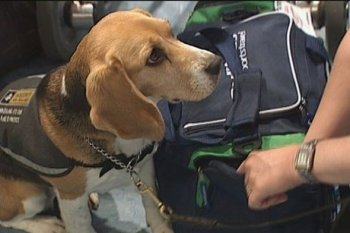
These include:
- The current tourism boom with tourist numbers through our airports increasing dramatically;
- Ever-increasing trade volumes, with both sea and air containers possibly harbouring hitchhiking pests;
- A changing climate with warmer temperatures, more moisture-laden air and heavy rainfalls, all improving conditions for the survival of many pests previously unable to establish themselves in NZ.
To manage the increases in pest numbers MPI established, in 2012, a unit known as the “Emerging Risks System – Biosecurity” [ERS].
A closer look at the ERS and its reports are worth a closer look:
MPI’s Emerging Risks System for Biosecurity (ERS-Biosecurity) is designed to proactively identify and manage potential and emerging risks to New Zealand’s biosecurity. The system focusses on plant and animal hazards and other invasive species in the terrestrial and aquatic environments. Established in August 2012, the current priorities of the ERS-Biosecurity are significant changes to the distribution, hosts or virulence of exotic organisms of biosecurity concerns to New Zealand.
The ERS – Biosecurity, a centralised MPI system providing a clear entry point for emerging risk information from stakeholders, MPI staff and other sources to enter the organisation, be properly assessed, and have appropriate action taken. Importantly, it also provides a mechanism to communicate emerging risks to stakeholders so they also have an opportunity to consider and take appropriate action within their own sphere of influence. Since the inception of the ERS on 31st August 2012, the total number of alerts sent to the system is 5,020 and 916 have progressed into the ERS.
System focus
The current focus of the system is information that signals significant changes to the distribution, hosts, or virulence of exotic organisms of biosecurity concern.
A small number of primary information sources are regularly scanned by the Biosecurity Science and Risk Assessment Group, including electronic notification systems:
- EPPO (European and Mediterranean Plant Protection Organization) alerts;
- IBIS (International Biosecurity Intelligence System) alerts;
- PestLens – a United States Department of Agriculture exotic plant pest monitoring system that provides timely information to support informed safeguarding against pests that threaten U.S. agriculture and natural resources);
- ProMed (Program for Monitoring Emerging Diseases) – an Internet-based reporting system dedicated to rapid global dissemination of information on outbreaks of infectious diseases and acute exposures to toxins that affect human health, including those in animals and in plants grown for food or animal feed)
MPI staff members and external stakeholders also forward ‘alerts’ to us via e-mail
Screening process
The screening process uses a science filter to assess the risks:
The criteria are:
- Have we looked at this before?
- What has changed?
- What is the potential for organism establishment and impact?
- Are there viable pathways?
- What does the information mean about the risk? Has it changed substantially?
- Is it worth considering further?
- Is it urgent?
If an emerging risk is identified the following points are considered:
- Are there any identified hosts or associated products that are eligible for import under a valid Import Health Standard (IHS)?
- Are there already specific pre-export, on shore (border) or off-shore measuresin place that would appropriately manage the emerging risk?
- Does an IHS need to be amended, revoked or suspended?
- Are amendments required urgently?
- Do procedures at the border require urgent amendments?
- Are there commodities in transit to NZ that we need to action on?
- Are we already sufficiently prepared?
- If not, is the residual risk sufficient to warrant preparedness actions?
- Are there other factors that make action advisable?
- Do stakeholders need to be involved in this decision?
- What communications are required and what audience needs to be targeted (includes internal, external – exporters, importers, NPPO’s, Minister, MPI Officials etc.)?
Further, MPI sectors then consider what actions and interventions, if any, are required to manage potential risks, e.g. changes to an IHS or development of readiness plans.
Value of ERS
- It has systematically increased the rate at which MPI is informed of new information on pests associated with commodities. There is a significant amount of new information signaling pests associated with imports which is captured by the centralized process of ERS, and then communicated to the right people;
- Has highlighted that for certain crops (e.g. grapes) our knowledge of associated risks is changing radically (new information, new pathways);
- Has been used systematically as a source of information by some risk managers to consider whether new risks have arisen when issuing permits under import health standards;
- Has resulted in streamlining the communication of emerging risk information to relevant parties – resulting in a less scatter-gun communication and response (with decreased duplication of risk assessment);
- Has facilitated some amendments to MPI’s current measures in response to emerging risks processed by the system;
- Is providing confidence that MPI’s measures are adapting to the changing environment of emerging risk information;
- Is continuously improving including: the refining of decision criteria throughout the system; increasing the Administrator’s role in monitoring system performance; evaluation of system performance by Quality Assurance reviews, and the establishment of system evaluation discussions between Risk Team Managers and Risk Managers;
Provides the opportunity to apply a quality assurance process to MPI’s identification and management of emerging risks.



 Classifieds
Classifieds

